At the dawn of the 20th century, the Wright Brothers’ Flyer took humble flight against the sandy winds of Kitty Hawk, NC. While it stayed airborne for merely twelve seconds, covering 120 feet, it allowed humanity to dream beyond the horizon. Just over a decade later, all those aviation aspirations were brought to life as American aviator Anthony Jannus piloted humanity’s first scheduled commercial passenger flight from St. Petersburg to Tampa, Florida. As Americans sought new heights and farther destinations, commercial air travel allowed citizens to go places faster than any previous generation.
New York to Austin, Phoenix to Detroit or San Francisco to Boston – but flying between continents? That came with technicalities of its own, especially in matters of time.
Ready For Take-Off
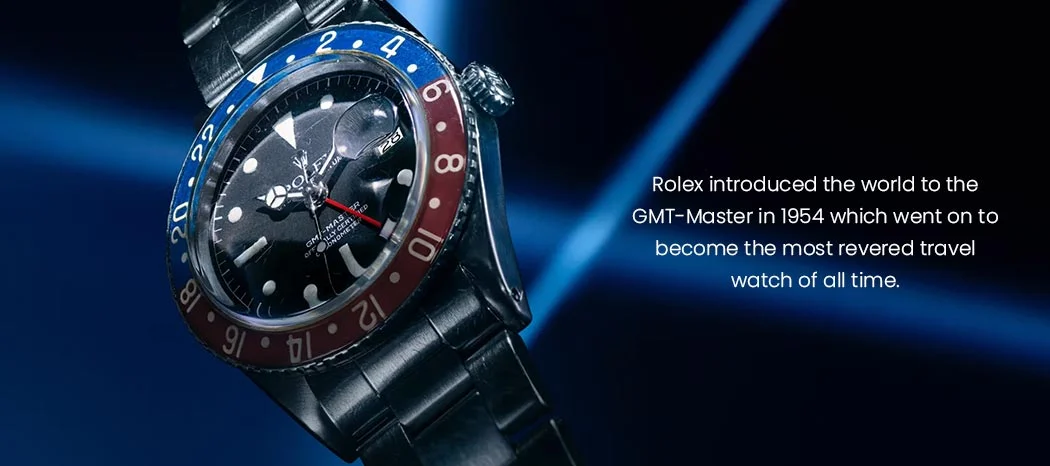
As aviation became globally capricious and pilots crisscrossed between time zones, keeping track of departure and destination local time became tricky. During this ‘golden age’ of commercial aviation and the growing popularity of over-ocean, long-haul flights, the industry needed a timepiece that would allow it to keep track of multiple time zones at once. Enter Pan AM – one of America’s leading airlines of the 20th century, who consulted Swiss watchmaking marque Rolex for creating this pioneering timekeeper. Embracing this challenge, Rolex introduced the world to the GMT-Master in 1954 which went on to become the most revered travel watch of all time.
An Intercontinental Icon
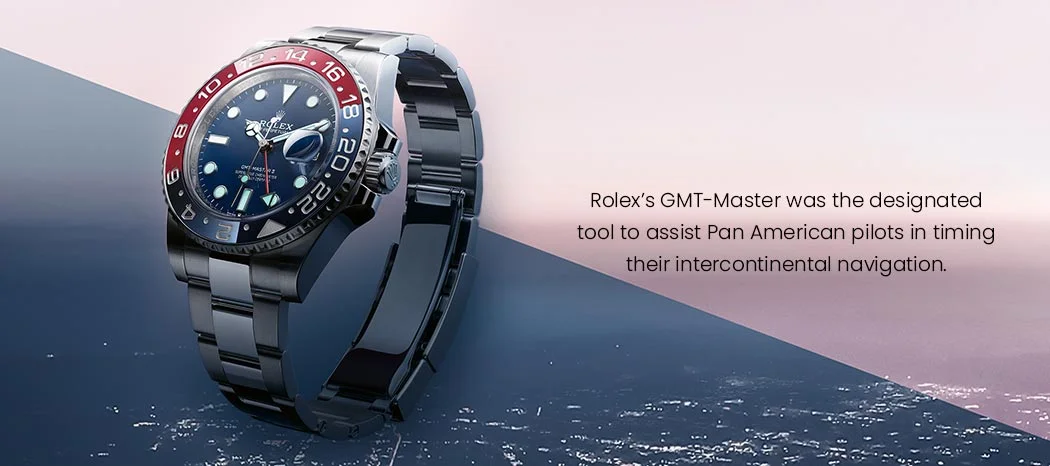
‘GMT’ comes from Greenwich Mean Time, commonly referred to as UTC (Coordinated Universal Time). This timekeeping system was based on calculating mean solar time from the Royal Observatory in Greenwich, London. Pilots of Pan American Airlines officially referred to GMT/UTC to time their intercontinental navigation. Rolex’s GMT-Master was the designated tool to assist Pan American pilots in this matter. Its dual-toned bezel, date window, and fourth hand dipped in a striking red hue served as a timekeeping vantage point when traversing between continents. The GMT hand completes a full rotation every 24 hours, which works in tandem with the 24-hour graduated rotating bezel. While Rolex wasn’t the first or only watch manufacturer to create timepieces that track two or more time zones, it was the GMT Master’s iconic design that was effortlessly ergonomic yet elegant that allowed it to become an icon of timeless globetrotting.
The First GMT-Master
By the 50s, Rolex had a proven track record of producing sporty luxury watches with the Daytona, Turn-O-Graph and Submariner. For the GMT-Master, they simply picked the right design elements from existing star models. The Reference 6542 is slated as the first-ever GMT-Master, featuring a distinctly stunning two-tone bezel. However, this wasn’t just a cosmetic feat, the two tones represented day and night for the 24-hour GMT hand. The bezel, crafted out of a delicate acrylic material called ‘Bakelite’ featured numerals painted in radium paint – these bezels are highly sought after by collectors. Set in a 38-millimetre Oyster case, it also featured Rolex’s iconic hands and a Cyclops date window at three o’clock.
White House to Red Square
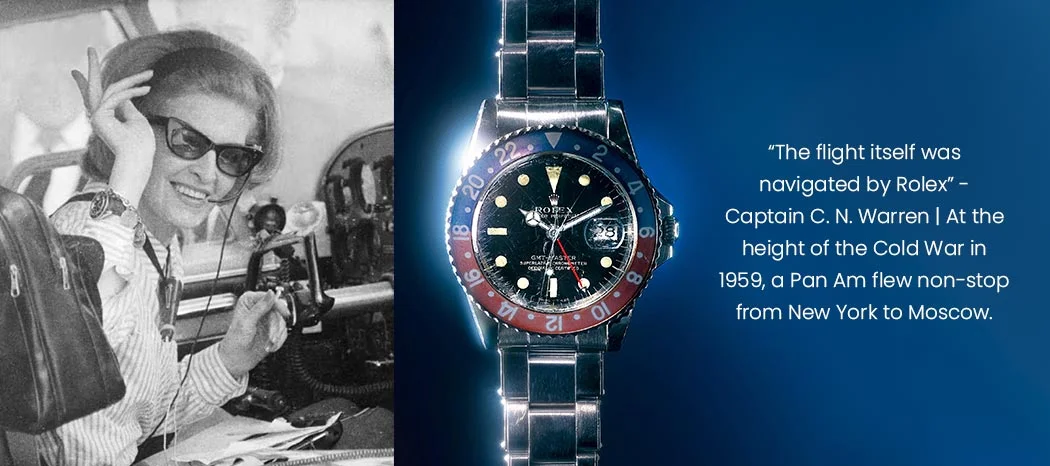
At the height of the Cold War in 1959, a Pan American World Airways Boeing 707 flew non-stop from New York to Moscow. Carrying journalists to cover U.S. Vice President Richard Nixon’s visit to the Soviet Union to bridge global connections, this aircraft was piloted by Captain C. N. Warren, who relied on his GMT-Master as a navigation aid during this pioneering journey. He famously stated, “the flight itself was navigated by Rolex,” underscoring the watch’s precision and reliability.
GMT-Master Goes Supersonic with Concorde
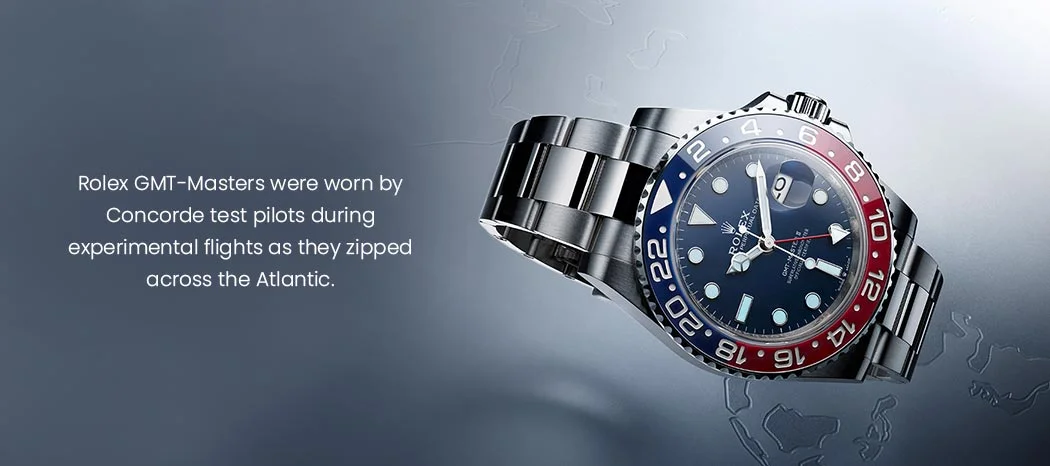
Over the years, the GMT-Master has taken many forms – ditching its Bakelite bezel for aluminium or burgundy, brown hues, yellow gold iterations, gilt and matte dials, and even a uniquely playful pink toned edition. But a particular Ref 1675 collection dubbed ‘Concorde’ models, stood out. Named after the bird that made supersonic commercial aviation possible, Rolex GMT-Masters were worn by Concorde test pilots during experimental flights as they zipped across the Atlantic. The Concorde, ‘the flight into the future’, marked a new era for luxury aviation, offering business class opulence at speeds of Mach 2. This all-gold version swapped out the broad hands for arrow-tipped hands, similar to those spotted on Daytonas or Datejusts.
Sky’s the Limit?
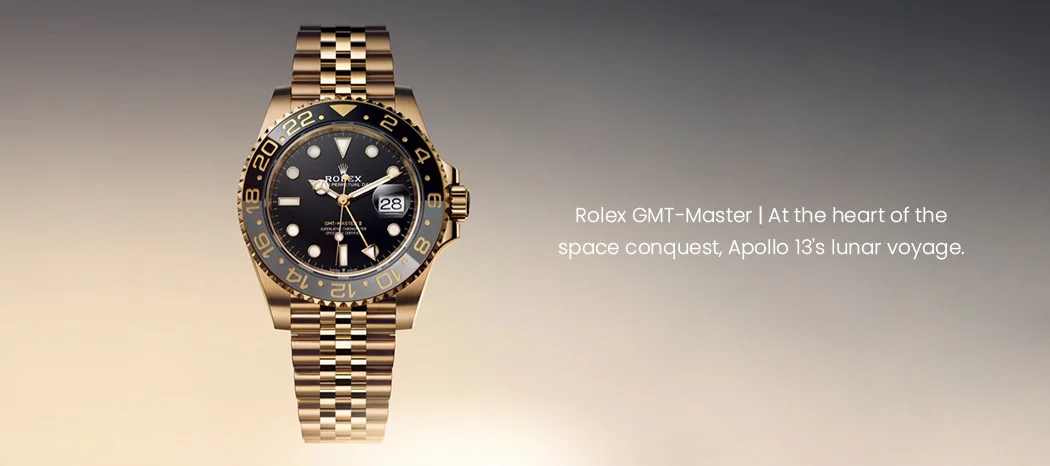
The Rolex GMT-Master traversed between continents, flew at supersonic speeds, and then aimed for the stars.
All through the ‘60s, NASA and the US Air Force ran the X-15 hypersonic flight research programme, which subjected pilots to Mach 6.7 or 4,520 mph speeds over the Mojave Desert, California – those pilots wore GMT-Masters. Two years later, the timepiece proved its excellence in reliability once again, this time on a spaceship and thousands of kilometres away from Earth. During Apollo 13’s lunar voyage, a technical fault caused the vessel’s second oxygen tank to explode. Forced to return home, Command Module Pilot Jack Swigert strategically altered the spacecraft’s course and prevented it from ricocheting off the Earth’s atmosphere on re-entry – he used a Rolex GMT-Master to time this manoeuvre. NASA again trusted their travel timepiece in 1972, during the final Apollo mission: Saturn V, where Captain Ronald Evans was wearing his GMT-Master.
New Generation of Aviation, New GMT-Master II
As the age of aviation evolved, so did the requirements of Pilots – Rolex’s GMT-Master II consistently remained their aviation timekeeper.
Eternally Soaring to New HeightsIn 1983, Rolex unveiled the GMT-Master II or Ref 16750 in all steel offering better water resistance. The movement calibre 3075 received a major upgrade as well, with an increased frequency of 28,800 vph and the ability to quick-set date and independently adjust the hour hand from the GMT hand. The GMT-Master’s legacy is further solidified by its appearances in pop culture. Notably, the 1964 James Bond film “Goldfinger” cemented its status as a symbol of sophistication and adventure.
Eternally Soaring to New Heights
The Rolex GMT-Master is often called “the world’s most famous travel watch” for good reason. First, its versatility – evolving through generations and catering to a spectrum of clientele. Second, it encompasses the technical brilliance of sister Rolex models like the Submariner and Sea-Dweller. And third, its durability in craftsmanship – while Rolex retains its signature silhouette, the Cerachrom bezel, scratch-resistant sapphire crystal, and technically masterful movements intently built to accompany the adventurous, jet-set, and globe-trotting.

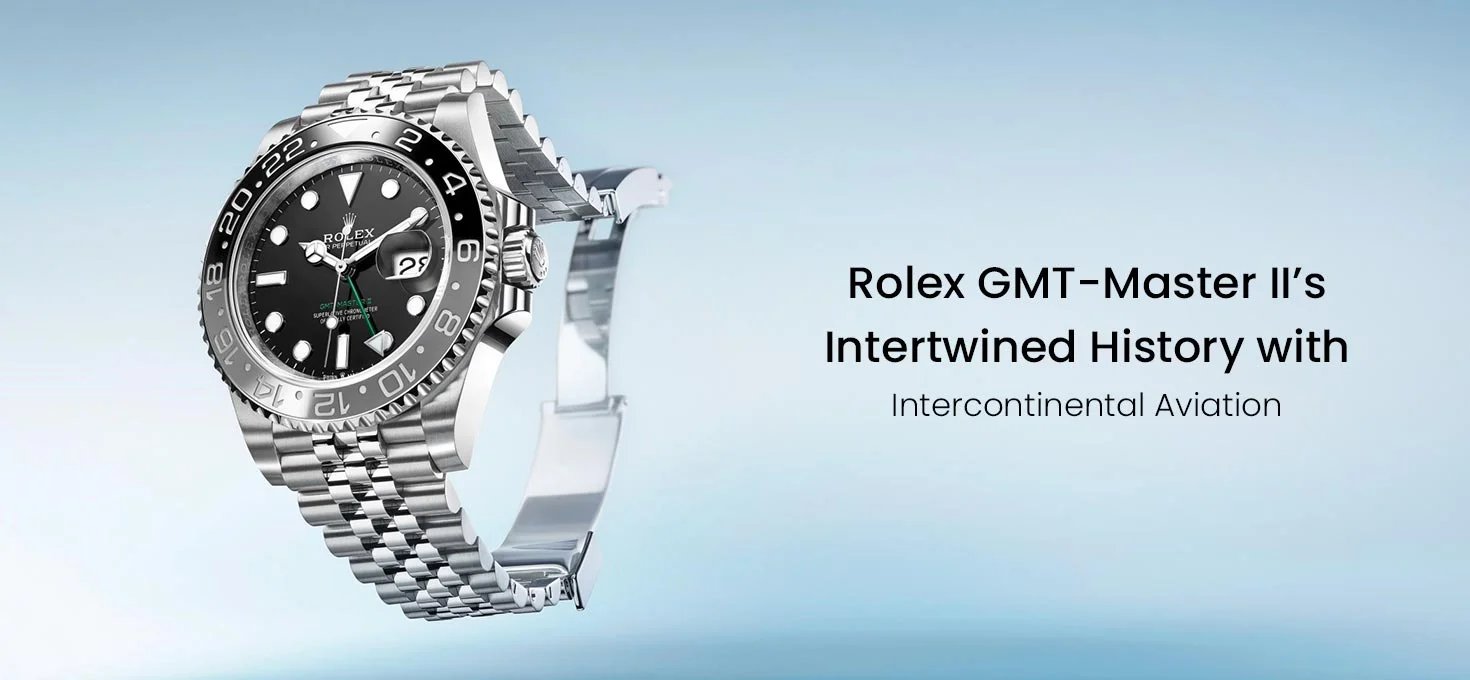



Recent Posts
Recent Comments
Archives